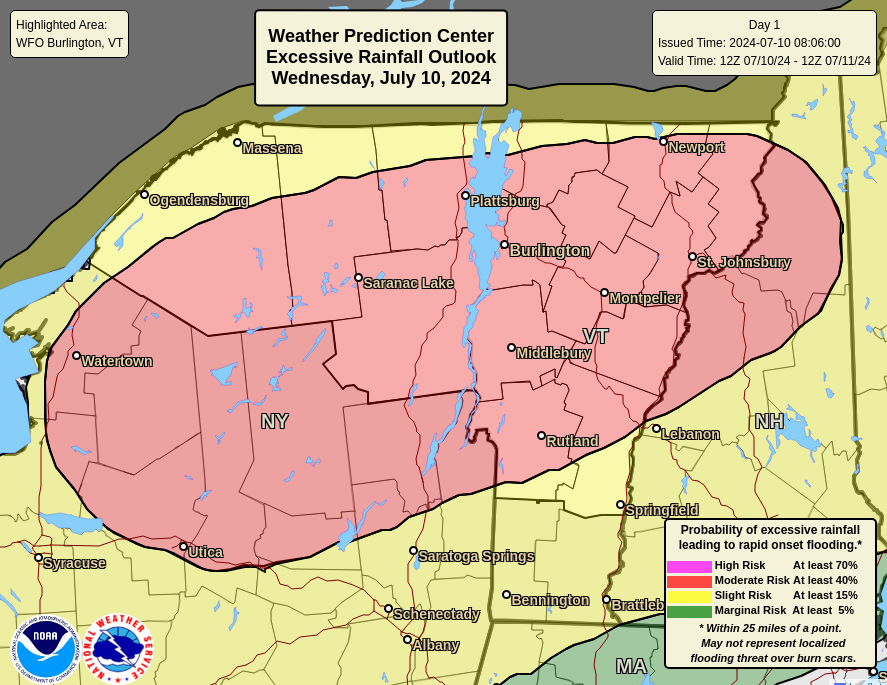First off, I want to just thank folks that found The Eyewall or used The Eyewall during Beryl. We set all sorts of traffic records for our relatively new site, and we’re hopeful that the information offered was useful. I was hoping to post yesterday, but both Eric and myself have had storm damage to contend with and I finally lost internet yesterday. I am fortunate to be on generator power but as you can imagine it’s a little chaotic still.
I just need to clarify something for readers: We have been mostly “dark” since Sunday, which as I noted in our last post was because our coverage was Houston-specific and our companion site, Space City Weather is intended to focus on that. I just want to make it clear to folks so there is no confusion: If a storm is hitting the Houston area, the bulk of our coverage during the storm will be there. We have an obligation to our local audience there. When time allows, we will cross post to the Eyewall. Eric and I juggle a lot of things with full-time work in addition to this, and perhaps one day we can make this our full-time focus. We’ll see.
Beryl initial reaction
For a category 1 hurricane, Beryl was something to go through. It was informative, as this was personally my first hurricane experience. I’ve been in many storms on the East Coast undergoing transition to tropical storms or extratropical storms and many nor’easters, but I had never been in a bonafide hurricane. It is a unique experience. The rapid intensification started a little later than expected as Beryl approached Texas, which may have spared Houston a category 2 or 3 outcome. Still, there is something to be said about a storm rapidly intensifying at landfall versus a stable or weakening storm at landfall. Beryl fell into the former camp and it showed. We’ll probably touch on that another time because I think that further adds to the nuance of hurricanes and shows the pitfalls of using the Saffir Simpson scale monolithically.
In addition to all the power outages and the damage near Houston, a pretty wild tornado outbreak accompanied Beryl in Louisiana and far northeast Texas as well.
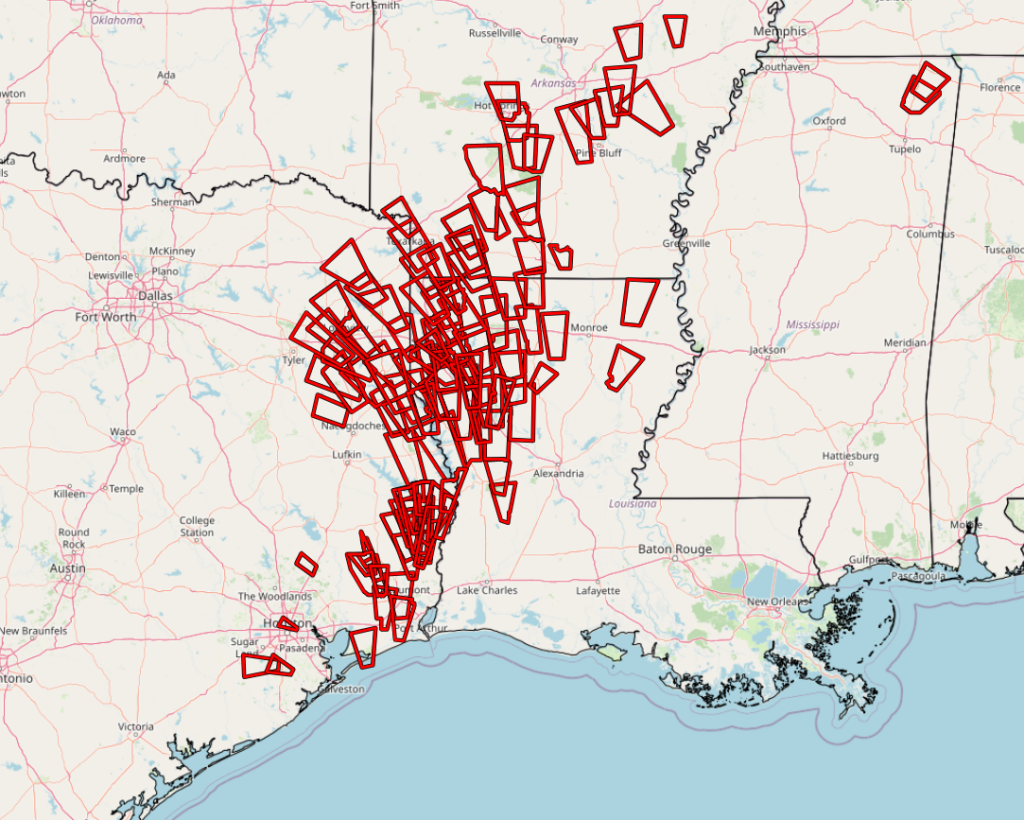
Hats off to the folks, especially at the Shreveport NWS office that issued quite literally dozens of warnings to keep people safe. A special thanks to the utility workers in the field right now trying to restore power to the 1.3 million Houstonians without it still.
It’s a lot to digest, and we’re going to give it a little more time and post more thoughtfully than emotionally about literally all the things involved in Beryl, from the forecast and modeling to the impacts to the nuance to Houston-centric questions about preparedness, sustainability, and resiliency.
Beryl’s rain & Southeast shenanigans
Beryl’s remnants are into the Midwest and Northeast today, and there is a moderate risk of excessive rainfall in place for parts of Upstate New York, the Adirondacks, and Vermont. Flash flooding will be possible as that comes north.
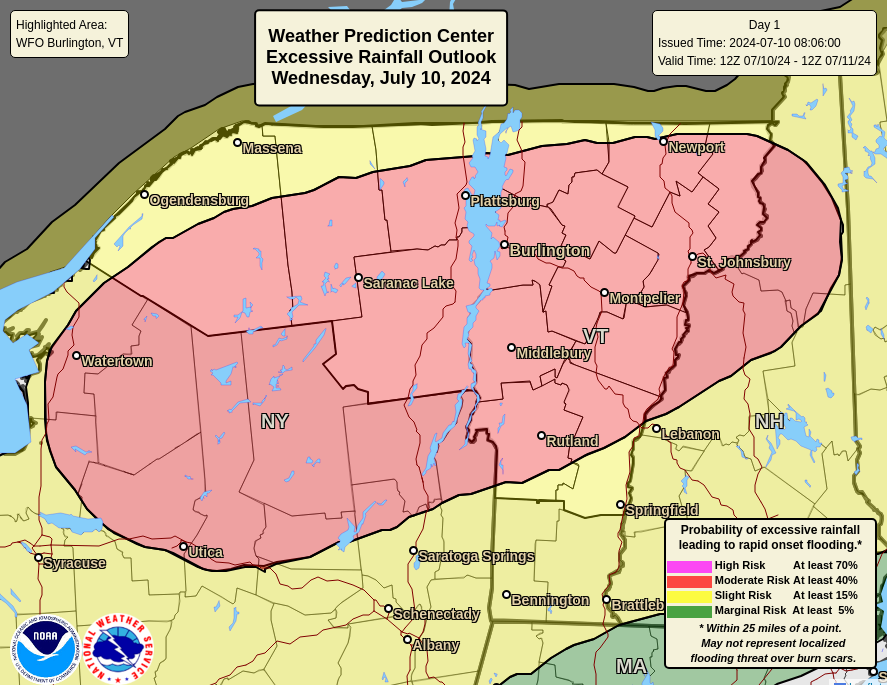
This includes Utica, Watertown, Burlington, and Montpelier, some areas that have seen serious, devastating rainfall in recent years, so hopefully problems aren’t as serious this time. In addition to excessive rain, there is an enhanced tornado risk today (level 3/5) for similar areas, including much of Central New York. Have a way to receive weather warnings in this area.
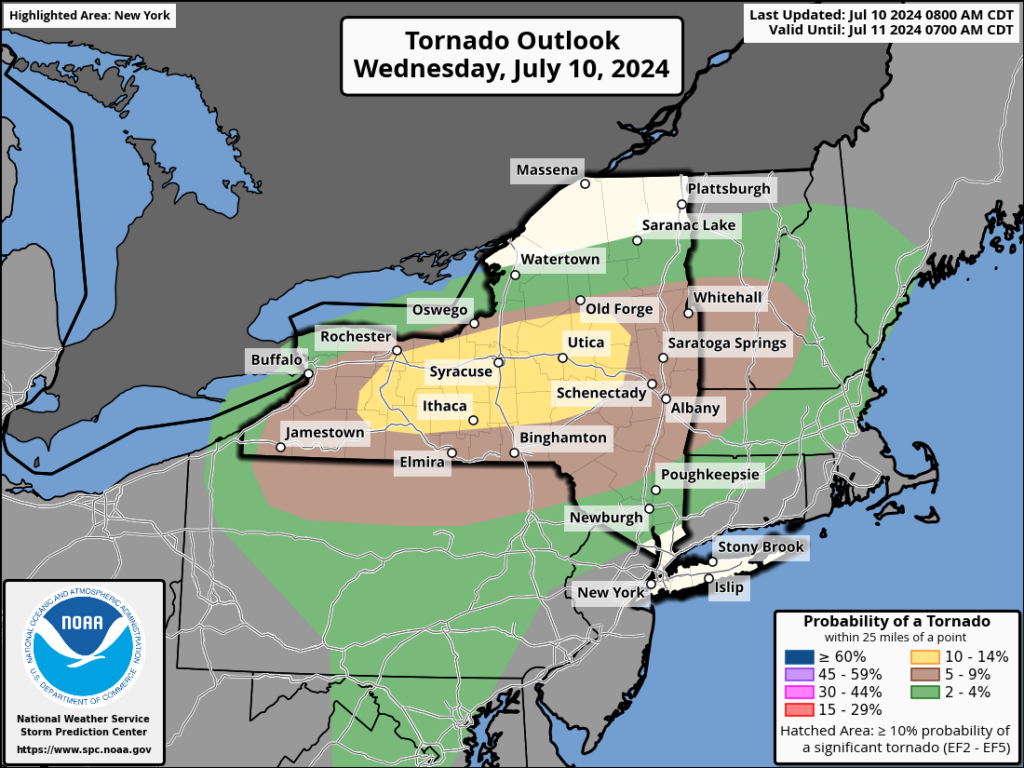
Meanwhile, the Southeast will be keeping tabs on a weak low pressure system off the coast to close this week. It is not quite together yet, but over the next 2 to 3 days, modeling suggests it organizes a little, tracks along or just off the coast of the Carolinas and eventually out to sea. The good news is that any development should be slow to occur and this will be out of the picture in a couple days. The Hurricane Center has 10 percent odds on it. I might lean a little higher than that, but the ceiling is low on this one. There will be locally heavy rainfall however, and a slight risk (level 2 of 4) of excessive rainfall is in place on Friday as this exits.
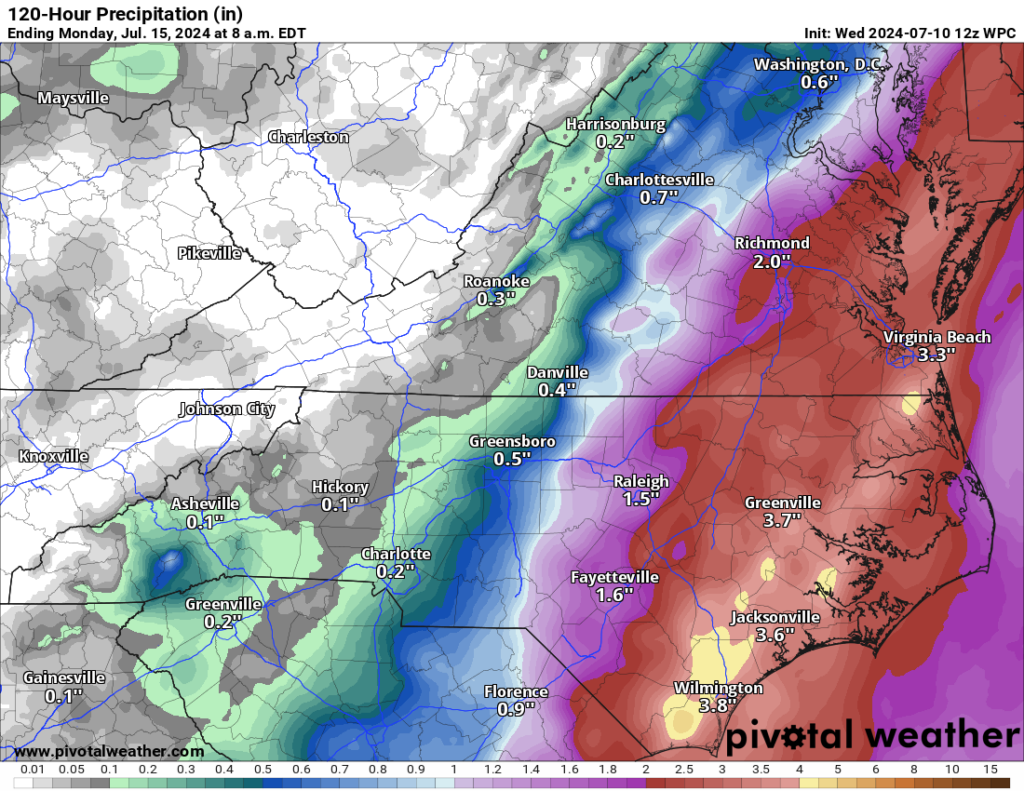
Other than this, no areas of development are noted by the National Hurricane Center today.
Looking out farther in time, the background state of the atmosphere over the tropical Atlantic looks highly unfavorable for tropical development. Modeling is pretty quiet overall with not even many outlier members showing tropical development over the next 10 to 12 days. I think we will close July on a quiet note, given this, with perhaps maybe a slight uptick of risk in just the last few days of the month or early August. But for those of you with plans over the next week or two, we see no concerns for now.
Source link


